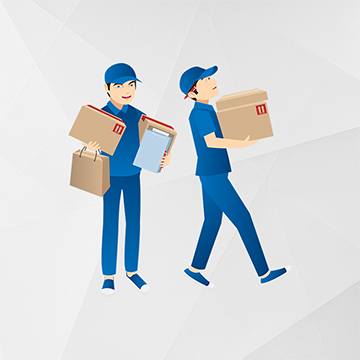Proper packaging is essential to ensure that your items arrive safely and in good condition. At SCS, we understand the importance of secure packaging and are here to guide you through the process. Here’s how to properly package your items to protect them during transit and ensure they reach their destination intact.
1. Choose the Right Packaging Materials
Selecting the appropriate packaging materials is crucial for protecting your items. Here’s a breakdown of materials you might need:
- Boxes: Use sturdy, corrugated cardboard boxes that are in good condition. The box should be large enough to accommodate your item with additional space for padding but not so large that the item shifts around.
- Bubble Wrap: Ideal for cushioning fragile items like glassware, electronics, and ceramics. Wrap the item completely in bubble wrap to absorb shocks and prevent breakage.
- Packing Peanuts: These fill voids in the box and provide cushioning to prevent items from moving. They are especially useful for delicate or irregularly shaped items.
- Foam Sheets: Great for cushioning and protecting flat or delicate items. Foam sheets can also be used to wrap items and fill gaps in the box.
- Plastic Wrap: For protecting items from moisture and dust, especially if you’re shipping during rainy or dusty seasons.
2. Wrap Items Securely
For fragile or high-value items, proper wrapping is essential:
- Wrap Fragile Items: Use bubble wrap or foam sheets to wrap each item individually. Ensure that the entire surface of the item is covered, and use tape to secure the wrapping.
- Seal Edges: For added protection, seal the edges of the wrap with tape to prevent it from unwrapping during transit.
3. Prepare the Box
Before placing your items in the box:
- Check Box Condition: Ensure the box is clean, dry, and free from any damage. If it’s an older box, reinforce it with packing tape to ensure it can withstand the journey.
- Line the Box: Add a layer of packing peanuts or crumpled paper to the bottom of the box for cushioning.
- Place Items Carefully: Arrange the wrapped items in the box, ensuring that they are not too tightly packed. Items should be placed in the center of the box with cushioning all around them.
4. Fill Gaps
Fill any empty spaces in the box with additional packing material:
- Use Packing Peanuts or Crumpled Paper: These materials prevent items from shifting and provide extra cushioning. Ensure there are no gaps where items can move.
- Avoid Overpacking: Do not overstuff the box, as this can cause the box to burst open or become damaged during transit.
5. Seal the Box
Securely seal the box to prevent it from opening:
- Use Strong Packing Tape: Seal all open edges and seams of the box with packing tape. Use multiple strips of tape to ensure the box is fully sealed.
- Reinforce Seams: For added strength, reinforce the seams of the box with additional tape.
6. Label the Box Clearly
Proper labeling helps ensure your package reaches its destination without issues:
- Address Labels: Clearly write or print the recipient’s name, address, and contact information on the label. Place the label on the top of the box.
- Fragile Labels: If your package contains fragile items, use “Fragile” or “Handle with Care” labels to alert handlers to take extra precautions.
- Barcodes and Tracking: If applicable, ensure any tracking barcodes or labels are visible and easily scannable.
7. Consider Special Packaging for Specific Items
Certain items may require specialized packaging:
- Electronics: Use anti-static bubble wrap and original packaging if available. Ensure all components are secured and cushioned.
- Liquids: Seal liquids in leak-proof containers and wrap them in plastic wrap or leak-proof bags. Use additional padding to prevent leaks.
- Valuables: For high-value items, consider using additional security measures such as tamper-evident packaging or insurance options.
8. Check Weight and Size Restrictions
Before shipping, check the weight and size restrictions for your delivery service. Ensure your package meets these requirements to avoid delays or additional fees.
9. Review and Double-Check
Before sealing the box:
- Review Contents: Double-check that all items are securely wrapped and cushioned.
- Verify Labeling: Ensure the address and labels are correct and clearly visible.
10. Track Your Package
After shipping, use the tracking number to monitor the status of your delivery. This allows you to stay informed about its progress and address any issues that may arise during transit.
Book our services here
SCS, We Dey For You
